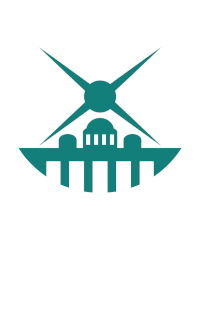PROGRAMME
Schedule
Talks are expected to begin on Tuesday, 3rd of September, at 9:00. On Monday afternoon, we invite all participants to check in and join us for a meet and greet session at the main venue. The conference will conclude on Friday, the 6th of September, after lunch.
Here you can check the congress schedule. A summary version of the congress is available here.
Presentation
Each participant is expected to give a 15-minute presentation on their research, followed by a 5-minute question-and-answer session. You may use your own laptop for your presentation. Alternatively, if you prefer to use our computer, please bring your slides as PDF or Power Point format on a USB stick or send them to yerac2024@oan.es in advance. All slides will be uploaded on the web of the conference.
Social programme
On Monday, the 2nd of September, from 18:00 to 21:00, there will be a check in and meet & greet session at Real Observatorio de Madrid, the conference venue.
On Wednesday, September 4th, after the conference, we will visit the Real Observatorio de Madrid (ROM), where the congress is taking place. It was founded on the initiative of Carlos III. Currently, it houses the headquarters of the Observatorio Astronómico Nacional and the Observatorio Geofísico Central, being a pioneer in the development of radioastronomy and geodesy, among the national volcanic monitoring and alert service. During the visit, we will explore the following places:
Villanueva Building: This is the main building of the Observatory, designed by Juan de Villanueva. It consists of three parts: the central rotunda where the Foucault Pendulum is located, illustrating the daily rotation of the Earth, and the collection of instruments (including authentic telescopes made by Herschel), the Repsold meridian circle (1854), and the library, which boasts a splendid collection of very ancient books.
Herschel Telescope: You can admire the replica of William Herschel's Great Telescope, with a 60 cm diameter and a focal length of 25 feet, dating from 1796-98, which was destroyed in 1808 during the Napoleonic invasion. The primary mirror of the original telescope can still be seen in the Villanueva Building.
Hall of Earth and Universe Sciences: This includes a wonderful collection of Astronomy, Geodesy, and Geophysics instruments from the XIX and XX centuries.
On Thursday, September 5th, we will take a trip to the Yebes Observatory (including some social activities), located in the province of Guadalajara, 80 km from Madrid and at an altitude of 930 meters. It is managed by the Yebes Astronomical Center, a unit of the National Geographic Institute dedicated to the development and construction of instrumentation in the field of radio astronomy, as well as to conducting astronomical observations of astronomical, geodetic, and geophysical interest. The center houses four main facilities:
The 40-meter diameter radiotelescope: it works very effectively in the C, X, K, Q, and W bands. It performs single-dish and VLBI observations (evaluated by the EVN program committee and the GMVA committee).
The 13.2-meter radiotelescope: it has a broadband receiver from 3 to 14 GHz and is dedicated to geodesy observations within the VGOS and EU-VGOS programs.
An anechoic chamber: it operates in the frequency range of 2 to 140 GHz.
Visit to the laboratories: study of the receivers developed at the Centro de Desarrollos Tecnológicos for the Yebes radio telescopes as well as for some observatories around the world.

